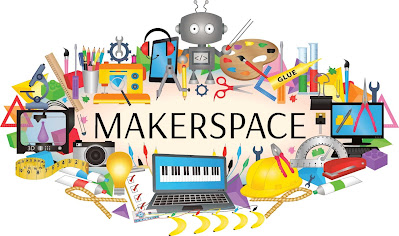AASL & ISTE Standards
American Association of School Librarians (AASL) Standards
The AASL Standards were created to guide teacher librarians in standardized practice that benefits teachers, students, and schools alike. These standards have six shared foundations (inquire, include, collaborate, curate, explore, and engage), and four main domains (think, create, share, grow). The AASL combined learner standards with school library standards and school librarian standards to bring clarity to the outcomes we want for our students.
In the Knowledge Quest Article, Now Serving An Appealing Menu of Digital Literacy Tools and Resources, Mary Lou Caron O'Connor describes how she utilizes the AASL standards in a unique way with her students. She uses the 4 domains and integrates a variety digital components and resources to help students research, share, think, and collaborate. She gives the students choice through a menu that includes, "links, information about grade-level appropriateness, and descriptions for colleagues to explore, choose choose from or sample, and serve up when teaching and guiding their students." (O'Connor, 2019). Because of the careful work she has done, students are able to choose what, where, and how they create and share their work, while having digital choices.
International Society for Technology in Education (ISTE) Standards
The ISTE standards do differ from the AASL standards. While both sets do contain specific goals for students and educators, and the ISTE standards do focus more on integrating technology and preparing students to be empowered learners, digital citizens, knowledge constructors, innovative designers, computational thinkers, creative communicators, and global collaborators. The ISTE standards also include accountability for coaches and educational leadership. Though the verbiage differs in the standards, many of the goals and outcomes are similar, and the standards are able to be blended together.
Working Together
From exploring the resources this week and the AASL website, it appears that much work has been done to streamline these standards, and make them more teacher-friendly, consistent, and aligned. For example, I was able to find that the ISTE standards have been aligned to the AASL standards and Future Ready Librarians framework by Follett and ISTE, and they can be found and dowloaded here or here for just the ISTE/AASL standards. These are really incredible resources for teacher librarians to utilize to ensure that they are aligning their teaching practices with the ISTE standards, AASL standards, and intentionally following the Future Ready Librarians Framework. These standards are similar in that they both have specific, measurable outcomes for students and teachers. It provides a clear foundation for what we should be teaching our students, how we want them to learn and grow, and what we want their outcomes to be as they enter our libraries. These standards blend well together because many of the goals for teachers and students focus on integrating technology in meaningful ways, encouraging critical thinking skills, and having students create and share their own learning.
References:
American Association of School Librarians. (2018). National school library standards for learners, school librarians, and school libraries. American Library Association.
International Society for Technology in Education. (2020). ISTE standards. ISTE. https://www.iste.org/standards
O'Connor, M. (2019). Now Serving An Appealing Menu of Digital Literacy Tools and Resources. Knowledge Quest, 47(5), 17–21. ISSN 1094-9046




Hi Amber! I agree that the AASL and ISTE standards are great resources for school librarians! They are clear and easy to uderstand, the crosswalks that show the overlap between the two sets of standards are valuable for when we are collaborating with teachers or meeting with school administration. I believe they are clearly written and functional enough that they can be easily applied to the SC state standards as well.
ReplyDeleteMegan Cummins
I think the crosswalks are so helpful as well! It really lays out how these standards can be integrated. What a powerful tool to bring to teachers in order to foster collaboration throughout the school!
ReplyDelete